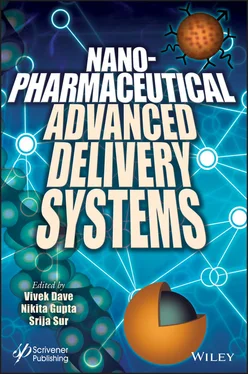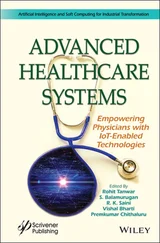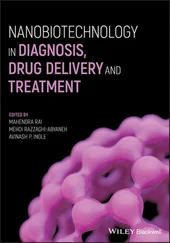2.2.1.1 pH-Sensitive Lipid Carriers
The pH-sensitive lipid carriers exhibit fusogenic properties under acidic conditions, which are otherwise stable at physiological pH 7.4. This property can be used to destabilize these lipid carriers to release contents intracellularly like delivery of anticancer drugs, antisense oligonucleotides, ribozymes, plasmids, proteins, and peptides to cells in culture or in vivo [31]. Phosphatidylethanolamine (PE) or its derivatives along with compounds containing acidic group (e.g., carboxylic group), which can act as stabilizer at neutral pH, can be used to formulate pH-sensitive lipid carriers. Due to poor hydration of head group of phosphatidylethanolamine containing liposomes, strong intermolecular interactions occur between the amine and phosphate groups of the polar head groups and cell membranes leading to internalization of liposomes through endocytotic pathway. The fusion of pH-sensitive liposomes with the cells prevents intracellular degradation of drug leading to their higher assessment to cytosolic or nuclear targets [32]. Dioleoylphosphatidylethanolamine (DOPE) is used as a major component in pH-sensitive liposomes, which potentiates the process of destabilization of liposomes [33], and thus, when added to liposomes prepared using phosphatidylglycerol (PG), phosphatidylserine (PS), phosphatidylcholine (PC), and cholesteryl hemisuccinate (CHEMS), drugs are delivered intracellularly. Anionic pH-sensitive PE liposomes can be also used to deliver antisense oligonucleotides as they are stable in blood and undergo phase transition at endosomal acidic pH [34]. Similarly, pH-responsive solid lipid nanoparticles and nanostructured lipid carriers can also be formulated for targeted drug delivery [35].
Faster recognition and sequestration of liposomes by phagocytes of reticuloendothelial system (RES) leads to short circulation half-life of these carriers. Also, due to their tendency to accumulate in lysosomes for relatively long periods of time, the encapsulated gets degraded resulting in poor availability at the cytosolic target site. Typically, PEGylation of lipids is done to prevent RES uptake and prolong their circulation time, but this brings down the pH-responsiveness. So, chemical modification of these copolymers by forming conjugates with DOPE for incorporation in pH-responsiveness is being done [36, 37]. pH-sensitive liposome can also be formulated using terminally alkylated N-isopropylacrylamide (NIPAM) [38].
2.2.1.2 Thermo-Responsive Lipid Carriers
Temperature-sensitive liposomes were first formulated by Yatvin et al . in 1978 [39], which released a hydrophilic drug at a temperature a few degrees above physiological temperature. The drug release from heat-triggered nanocarriers can be achieved by using thermosensitive polymers. When mild hyperthermia (HT) is applied along with administration of thermosensitive liposomes, the heat increases pore size of tumor vessel, increasing extravasation of liposome into the tumor. Further, hyperthermia facilitates release of drug from thermosensitive liposomes in the tumor vasculature as well as in the tumor interstitium [40].
The release of drugs occurs at the melting phase transition temperature (T m) of lipid bilayer following a phase transition from solid gel phase (L β) to a liquid-crystalline phase (L α) at T m. Dipalmitoylphosphatidylcholine, with T mof 41.4°C, is generally used as a major component in TSL. Drug release characteristics can be modified by blending DPPC with small amounts of other phospholipids, such as 1,2-dioctadecanoyl-sn-glycero-3-phosphocholine (DSPC) (Tm = 54.9°C) [41]. Lysolipid-containing low-temperature-sensitive liposomes (LTSLs) were the first TSL formulations used for intravascular delivery of drugs upon heating. Thermodox ®, licensed to Celsion Corporation (Columbia, MD, USA), is an LTSL formulation loaded with doxorubicin, which is currently under clinical investigation [42]. The shortcomings of LTSL have been rectified by development of sterically stabilized TSL formulation (Stealth TSL) by adding DSPE-PEG2000, which has improved stability and better in vivo half-life as compared to LTSL formulation [43]. Further, the safety of patients using TSL can be assured by encapsulating contrast agents to distinguish heated and unheated tissues, and also, absolute temperatures complementing traditional MRI thermometry methods can be quantified [44, 45].
History of micelles can be traced back to early 1990s [46]. Micelles consist of a hydrophobic core and a hydrophilic shell. The core contains the poorly water-soluble drugs, and the shell protects the core against the aqueous surroundings and protects the micelles from recognition in vivo by the reticuloendothelial system. The micelles can be formulated using either surfactants or polymers [47, 48]. Polymeric micelles exhibit higher stability and solubilization capacity and can be formulated at a lower critical micellar concentration (CMC) when compared to surfactant-based micelles [49]. Moreover, surface of polymers can be engineered through addition of ligands or pH-sensitive moieties for active targeting [47]. For targeting of deep seated tumor, polymeric micelles are a suitable carrier of choice as they can be administered by parenteral route and are biodegradable and exhibit small particle size, high loading capacity, prolonged circulation time, and higher accumulation at tumor site. Kabanov et al . reported enhancement of neuroleptic property of haloperidol when it was formulated in surfactant-based micellar system [50]. Improved cellular uptake and pharmacokinetics of methotrexate was observed when administered in PLGA-soy lecithin micelles [51]. Raza et al . formulated phospholipid-based mixed micelles of tamoxifen for the topical application and reported significantly better controlled release of tamoxifen from mixed micelles over conventional gel system [52].
Theranostics are a novel multifunctional approach that can perform both imaging and therapeutic functions. Theranostics nanomedicine provides high loading efficiency and has applications in diagnostics, drug delivery, and therapeutic drug monitoring, especially in the field of personalized medical care [53]. Iron oxide nanoparticles, quantum dots, gold nanoparticles, etc. are the nanoplatforms that are widely used for nanoparticle-based theranostics.
2.2.3.1 Gold Nanoparticles (AuNPs)
Gold nanoparticles (AuNPs) provide unique nanoplatform for a variety of applications as in computed tomography (CT), photoacoustics, plasmonic photothermal and photodynamic therapies, and magnetic resonance imaging (MRI) [54]. The AuNPs are available as nanospheres, nanorods, nanocages, nanoshells, and nanostars on large scale. These nanoparticles can be even prepared via green synthesis methods on large scale using extracts of neem leaves [55], Hibiscus rosa sinensis [56], Ocimum tenuiflorum , Azadirachta indica , Mentha spicata leaves, Citrus sinensis [57], Maduca longifolia [58], and Abelmoschus esculentus peel [59]. The antioxidants present in the extracts act as reducing agent for the metal salts, leading to the growth and stabilization of the NPs [60]. The optical characteristics of AuNPs are dependent on their shape and size. AuNPs can enhance scattering of light up to five to six times in comparison to most strongly absorbing organic dyes [61]. AuNPs of larger size undergo scattering and absorption in a similar fashion, and hence, this property of AuNPs can be used for bioimaging [62]. Composition of the nanoparticles also affects their optical properties. Wavelength of surface plasmon resonance (SPR) [63], which determines the specific frequency at which amplitude of oscillation reaches its maxima, changes on incorporation of silica [64].
Читать дальше












